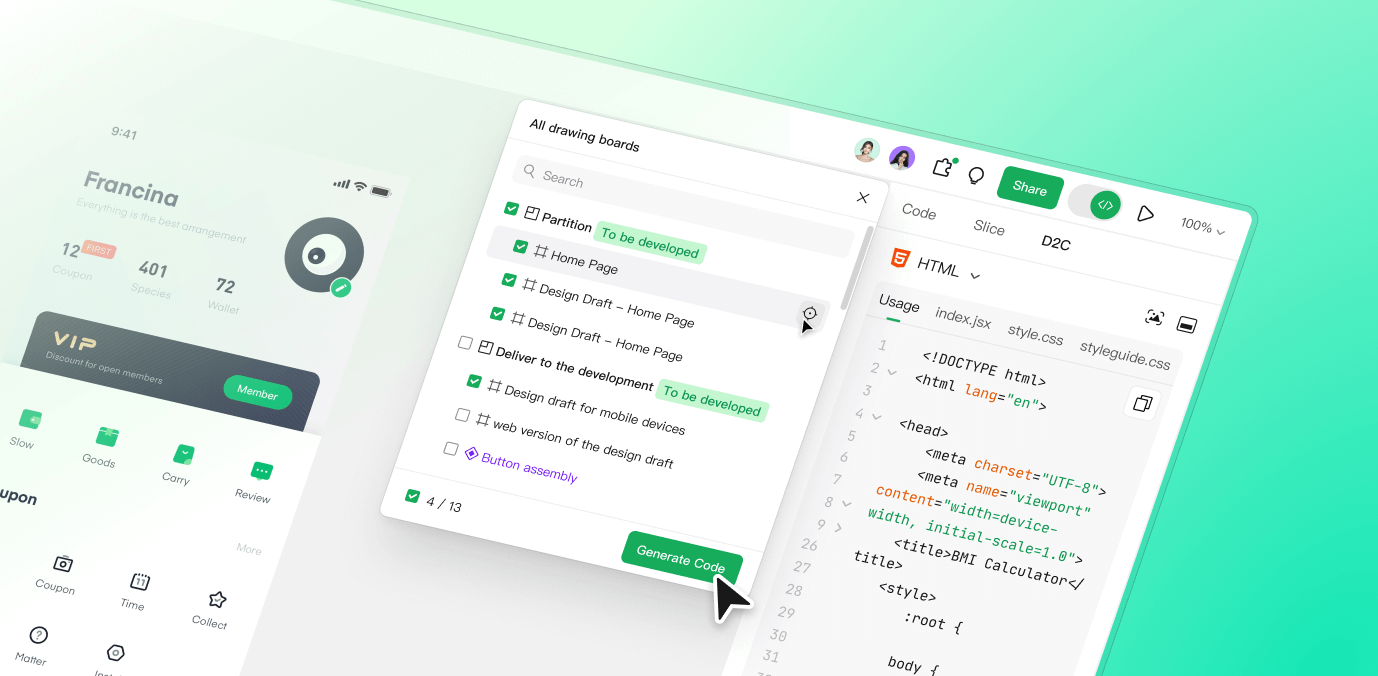Ever stared at a design file, wondering how long it’ll take to code every button, color, and layout? Pixso 2.0’s design to code feature fixes that. It looks at your design closely, then spits out clean, reusable code snippets with just one click. This cuts down the time you spend moving from UI design to front-end development—no more tedious, manual coding.
If you’re used to figma design to code workflows, you’ll love how smooth this is. Pixso’s design to code feature doesn’t just generate code; it makes sure that code matches your design exactly. That means less back-and-forth between designers and developers, and more time building.
What is Design to Code?
Design to code is more than just converting pixels to code—it’s about turning visual designs into functional, production-ready code snippets. Pixso’s tool doesn’t just copy colors or sizes; it intelligently recognizes layer structures, naming conventions, and styles, then outputs code that follows industry standards. This means less manual tweaking for developers and more alignment between design intent and final product.

Supported Code Types & Output Features
Pixso’s design to code tool covers 3 key frameworks/platforms, each tailored to specific development needs:
1. HTML / CSS
• Auto-generates semantic HTML tag structures (no messy, unorganized code).
• Supports responsive layouts (Flex/Grid) and extracts CSS styles directly from your design—so spacing, colors, and fonts match perfectly.
• Great for quickly building static web prototypes; front-end teams can use the code to test and preview designs fast, without starting from scratch.
2. Flutter
• Outputs Widget structure code that follows Flutter’s strict standards—no guesswork on nested layouts or property names.
• Converts key design attributes: nested layouts, colors, text styles, and images all translate to Flutter-compatible code.
• Ideal for rapid mobile UI building or cross-platform app development; cut down the time to turn design mockups into working Flutter interfaces.
3. ArkUI (OpenHarmony Development)
• Generates HarmonyOS interface code based on ArkTS, the official language for OpenHarmony.
• Supports component-based conversion, helping you build native HarmonyOS app interfaces without deep expertise.
• Lowers the barrier to ArkUI development: even teams new to HarmonyOS can speed up their design-to-implementation cycle.
Key Highlights of Pixso 2.0's Design to Code Tool
1. What You See Is What You Get
The tool automatically recognizes your design’s page structure, layer names, and styles. No more manually mapping design elements to code—what you see in the design is exactly what the code will build.
2. Multi-Platform Compatibility
It works with major front-end frameworks and platforms (HTML/CSS, Flutter, ArkUI). This flexibility means you don’t need separate design to code tools for different projects—one tool covers all your needs.
3. Editable Code
The generated code has a clear structure. Developers can easily edit, maintain, and expand it later—no confusing, minified code that’s hard to tweak.
4. Boost Collaboration Efficiency
Designers can export standard code snippets right from their design files—no extra steps needed. This cuts way down on the back-and-forth between design and dev teams. No more asking, “What’s the color hex for this button?” or “How should this layout nest?” It just lets everyone keep moving, which speeds up project timelines overall.
With Pixso 2.0’s design to code feature, the gap between design and development disappears. It’s one of the most reliable design to code tools for teams that want to turn ideas into working products faster—whether you’re doing figma design to code workflows or building for mobile or HarmonyOS. Try it now to streamline your design-to-code process and keep your team aligned.





